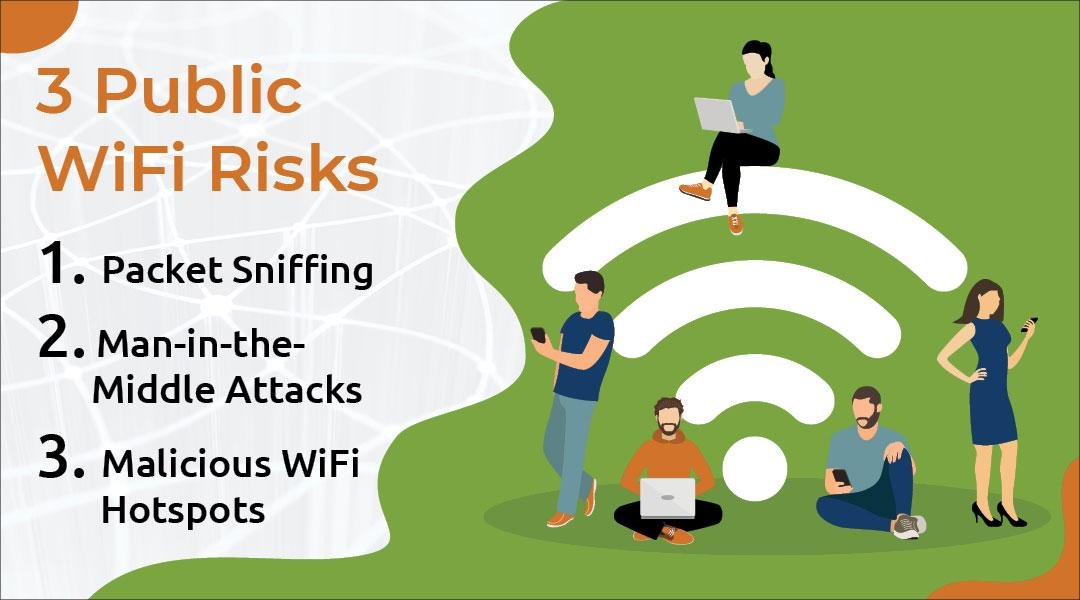By : Tanvi Karkare

Wireless Networking technology, better known as Wi-Fi; has been a revolutionary development in technology. Invented in 1991, and also known as wireless LAN; developments in WiFi technology has led to its wide use and popularity. Hassle free and wire less set up, the cost effective WiFi setup has led to its fast growth in industrial, service and home units. Operating on radio signals, antenna and routers, WiFi provides high speed internet at low cost. Secured through firewalls and antivirus software, these applications help keep the information transmitted safe and secure.
The spread of WiFi has led to many business and enterprises attracting customers by promising free WiFi. Free wireless WiFi networks promise a better working environment for working individuals and these schemes been a successful marketing gimmick for many chain outlets over the years. Free networks however also pose as the perfectly free access points for data breach enabling endless scope and opportunities for cybercrimes. The use of public WiFi holds a number of threats which go undetected but lead to big cyber crimes and thefts against the person using the public network; if accurate safety measures are not taken.
One of the biggest dangers associated with using public WiFi is the data breach and malware attacks that happen very frequently with easy access points. The WiFi available in public spaces does not always guarantee a safe and secure network. Since these networks have an open access, they are often easily accessible to hackers who are in search of such networks to access. There are various techniques through which the hackers compromise the data through these sites and use this data, especially credit and debit card data to commit fraudulent activities such as making big purchases, applying for loans and making explicit purchases.
One of the most popular ways to compromise your data is through MitM attacks. MitM or Man in the middle attacks are security breaches that occur when the hacker propositions himself between the free connection and the user. In such cases, any credentials, details you enter are relayed to the hacker who then passes it to the site. Many of our credit card, debit card details are passed over in such a manner.
Another threat which wireless connection users face is malware attacks. Hackers use application update pop ups and various other lucrative offers to lure in the users. The user may click on these pop ups not suspecting any activity, giving free access to the malware to corrupt the data. Such malware allows hackers to steal information and details from your device. This is the most lethal form of hacking as it often goes undetected for the longest period of time.
“Evil twin attacks”, also known as “honeypot attacks” are another common type of hacking technique. Using the name of a popular brand, borrowing a false sense of legitimacy through them, hackers set up WiFi hotspots and connections and trick people into registering with the network. Through these networks, they gain access to free flowing, unencrypted data passing through these networks. All these hackers and their techniques pose a threat to public WiFi users. However, these threats of security and data breach can be easily averted by taking some basic steps for security. These basic measures allow a user to access public WiFi very safely and securely.
While using a public WiFi, one can make ensure their safety by taking some basic steps. These steps ensure that you do not fall prey to such security breaches and scams which promise a threat to your valuable information and data. Following these steps, one can be rest assured that their data is more protected and not viable for stealing. While using a public WiFi, make sure you are using a VPN. A Virtual Private Network assures that the data exchanged is strongly encrypted and hackers are unable to decode the data exchanged between the two entities. Hackers usually go after data that is unencrypted and not protected. Mobile networks usually provide a VPN for further security as they understand the threat of online data breach.
VPN may not be available always and in such cases, one should always use a SSL when connecting to a public connection. Secure Sockets Layer are the “https” option available on websites. When using a site that requires a person to enter their credentials, it is always advised to use the “https” extension to ensure maximum security.
Some other cautious practices which one can follow are turning off sharing option from their device using the Control Panel. Device WiFi remains on even when not using and transmits data even when not connected to any network connection. Even though security measures are present, it is advised to keep your WiFi connection switched off from your device. It is also preferable to keep antivirus up to date to prevent data breach.
Every technology has its drawbacks, and its threats. Making optimum use of the technology and facilities available is dependent on the user. By taking adequate safety measures, one can safely make use of public WiFi while navigating through the dangers.